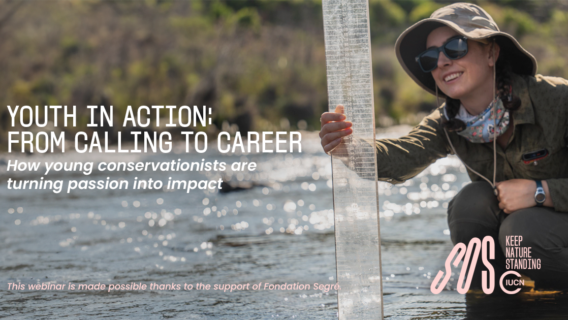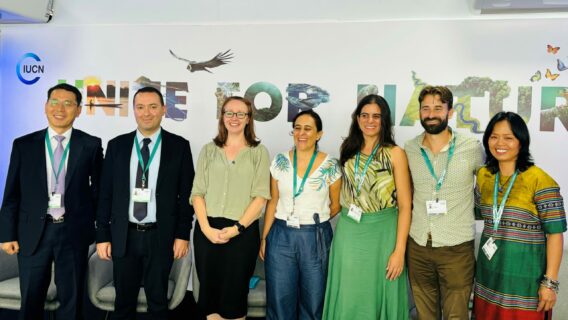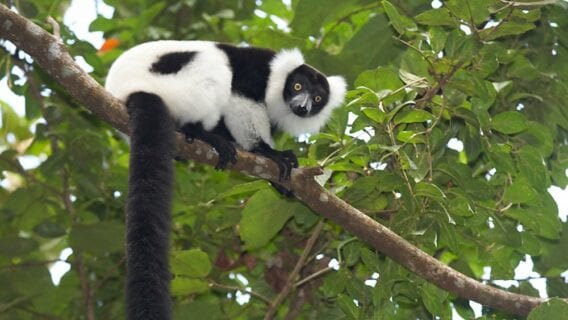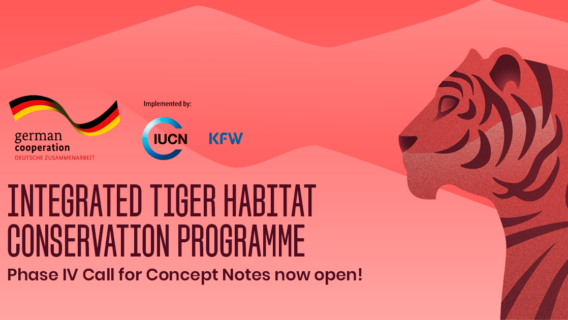IUCN Save Our Species highlights the crucial role of biodiversity in land restoration at UNCCD COP 16 in Saudi Arabia
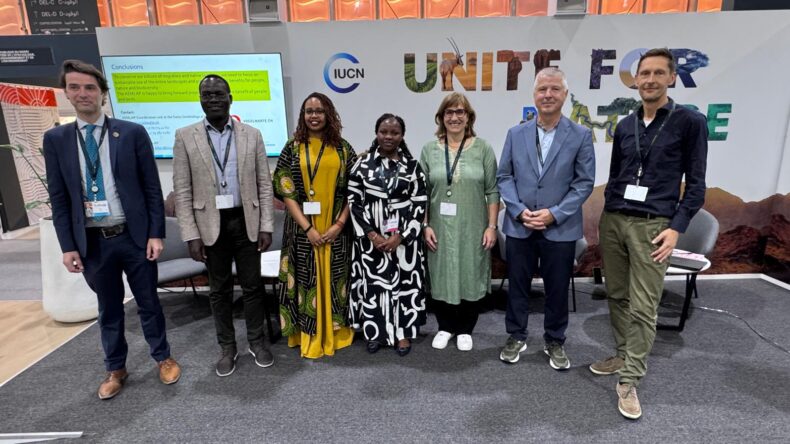
The session highlighted how biodiversity conservation can enhance the resilience of ecosystems and communities affected by climate change while aligning with the broader objectives of global environmental agreements, such as the Convention on Biological Diversity (CBD) and the Convention on Migratory Species (CMS).
In his opening remarks Luther Anukur (Regional Director for IUCN Eastern and Southern Africa), underscored the urgent need to address the intertwined crises of biodiversity loss, desertification, and climate change. Highlighting the alarming rate of species extinction, he emphasised that land degradation affects over 23% of the global surface, disrupting ecosystems and threatening the livelihoods of billions. He pointed to the importance of aligning biodiversity conservation with land restoration, urging a focus on native species, dryland ecosystems, and biodiversity monitoring. Mr Anukur showcased the SOS African Wildlife initiative as a successful example of integrating biodiversity conservation into land management.
Building on this, Faria Tarus (Programme Officer for the SOS African Wildlife initiative) highlighted specific actions and challenges related to species conservation, emphasising the significant impact of land degradation and fragmentation on species decline. She highlighted the need for adaptive management, sustainable funding, and partnerships to counter the pressures of societal priorities, legal gaps, and political instability. Ms Tarus further explained the initiative’s focus on halting the decline of large carnivores and smaller prey species, habitat management and restoration and promotion of sustainable livelihood options as an alternative to unsustainable natural resource consumption. To scale up actions and impact, Ms. Tarus highlighted the initiative’s work in with Multilateral Environmental Agreements in an effort to improve intergration and collaboration in the policy space. The initiative tackles issues like habitat fragmentation and invasive species, creating holistic conservation strategies.
These efforts align with the broader collaboration between the CBD and its counterparts, the UNFCCC and UNCCD, as highlighted by Tristan Tyrrell (Programme Management Officer for Biodiversity, Climate Change, and Dry and Subhumid Lands at the CBD). He underscored the importance of addressing interconnected global environmental challenges, including biodiversity, climate change, and land degradation. Through joint initiatives, the three conventions ensure policy coherence, share scientific data, and create integrated strategies to tackle these issues. This collaborative approach mirrors the integrated efforts demonstrated by SOS African Wildlife, which combines biodiversity conservation with land restoration and community engagement.
Similarly, Reto Spaar (Head of Regional Offices, African-Eurasian Migratory Landbirds Action Plan) discussed the African-Eurasian Migratory Landbirds Action Plan (AEMLAP), adopted in 2014 to improve the conservation of migratory landbirds across the African-Eurasian region. He stressed the importance of sustainable land use in protecting vital habitats for these birds, which face threats from deforestation and urban development. AEMLAP, like the goals of the CBD and UNCCD, focuses on ecosystem restoration, mitigating climate change, and enhancing biodiversity. Restoring habitats not only reduces desertification risks but also provides crucial stopover and breeding sites for migratory birds, benefiting both wildlife and human communities.
Faith Nyokabi (Ministry of Environment, Climate Change, and Forestry in Kenya) discussed how the country aligns its national plans with commitments under the Rio Conventions (UNFCCC, CBD and UNCCD). Through actions, the country tries to prioritise the engagement of local communities, Indigenous Peoples, civil society organisations, NGOs, and the private sector in conservation and sustainable development. Coordinated efforts across ministries ensure integrated action, while common indicators track progress across the Rio Conventions to streamline monitoring.
Franziska Kaguembèga (Founder and Director of International Programmes, newTree/tiipaalga) and Alain Jacot (Coordinator, Swiss Ornithological Institute) discussed how their habitat restoration work in Burkina Faso’s Sahel region informs policy. Their project, which includes small-scale fenced enclosures for reforestation and soil fertility, also trains local farmers in sustainable practices. The Swiss Ornithological Institute also monitors the effects on biodiversity, particularly migratory birds, using tools like acoustic monitoring. By connecting this research with on-the-ground actions, these efforts contribute valuable evidence to help shape policies and strategies that align with national and international environmental goals, such as those outlined in Kenya’s action plans and commitments under the Rio Conventions.
IUCN Save Our Species remains committed to ensuring that species conservation is central to global efforts to combat land degradation. As Dr. Grethel Aguilar highlighted in her official statement at UNCCD COP16, healthy ecosystems are essential for addressing environmental crises, and nature-based solutions must place people and biodiversity at the forefront. Initiatives like SOS African Wildlife and the African-Eurasian Migratory Landbirds Action Plan reflect this approach, emphasising the integration of biodiversity into land management and climate action. Species and habitats are not only critical to the success of land restoration but are also central to building resilience and ensuring sustainable livelihoods for local communities. By linking species conservation with sustainable development and ecosystem restoration, we can foster a more inclusive, holistic, and effective approach, ensuring a sustainable future for all.
The African Wildlife initiative is supported by IUCN Save Our Species and co-funded by the European Union.

